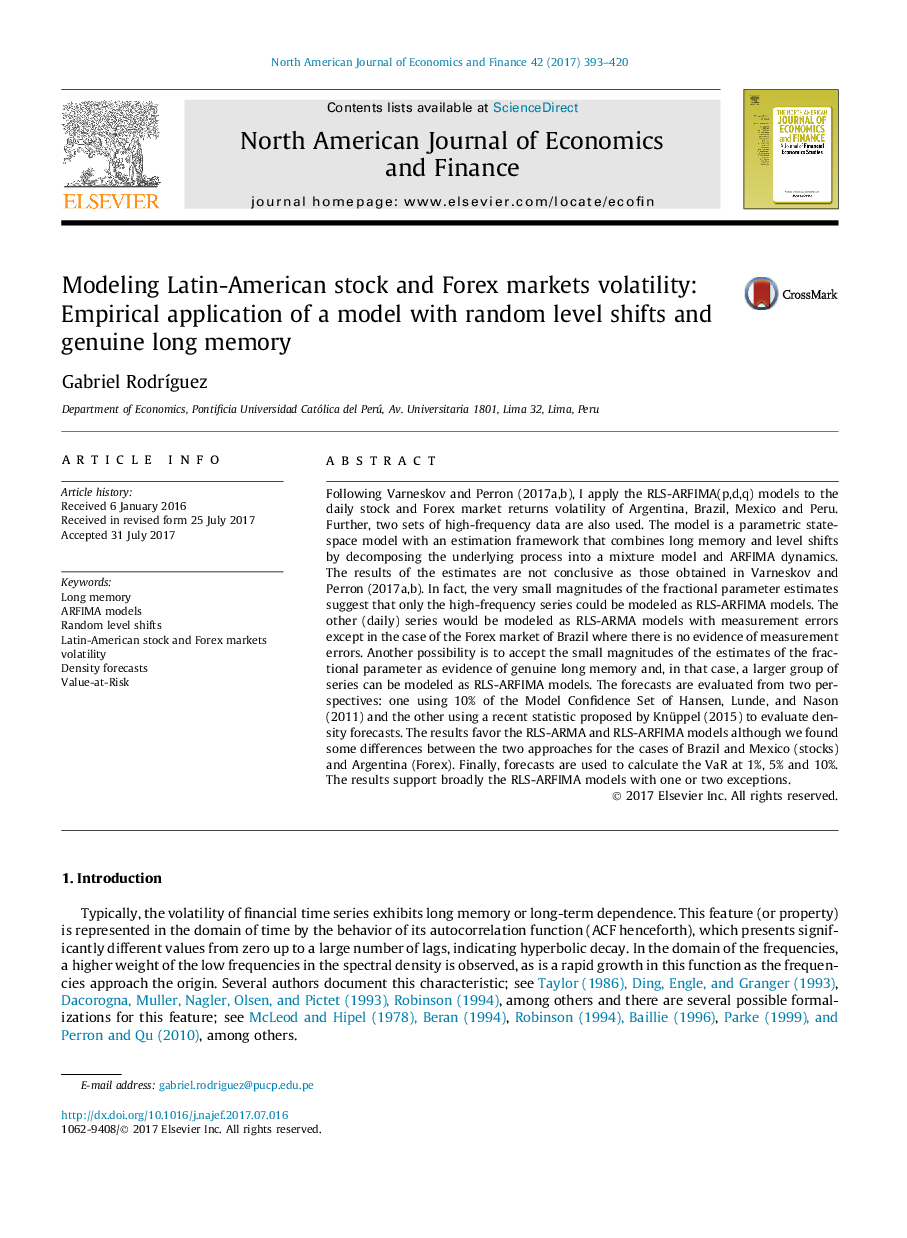| Article ID | Journal | Published Year | Pages | File Type |
|---|---|---|---|---|
| 5102191 | The North American Journal of Economics and Finance | 2017 | 28 Pages |
Abstract
Following Varneskov and Perron (2017a,b), I apply the RLS-ARFIMA(p,d,q) models to the daily stock and Forex market returns volatility of Argentina, Brazil, Mexico and Peru. Further, two sets of high-frequency data are also used. The model is a parametric state-space model with an estimation framework that combines long memory and level shifts by decomposing the underlying process into a mixture model and ARFIMA dynamics. The results of the estimates are not conclusive as those obtained in Varneskov and Perron (2017a,b). In fact, the very small magnitudes of the fractional parameter estimates suggest that only the high-frequency series could be modeled as RLS-ARFIMA models. The other (daily) series would be modeled as RLS-ARMA models with measurement errors except in the case of the Forex market of Brazil where there is no evidence of measurement errors. Another possibility is to accept the small magnitudes of the estimates of the fractional parameter as evidence of genuine long memory and, in that case, a larger group of series can be modeled as RLS-ARFIMA models. The forecasts are evaluated from two perspectives: one using 10% of the Model Confidence Set of Hansen, Lunde, and Nason (2011) and the other using a recent statistic proposed by Knüppel (2015) to evaluate density forecasts. The results favor the RLS-ARMA and RLS-ARFIMA models although we found some differences between the two approaches for the cases of Brazil and Mexico (stocks) and Argentina (Forex). Finally, forecasts are used to calculate the VaR at 1%, 5% and 10%. The results support broadly the RLS-ARFIMA models with one or two exceptions.
Related Topics
Social Sciences and Humanities
Economics, Econometrics and Finance
Economics and Econometrics
Authors
Gabriel RodrÃguez,
